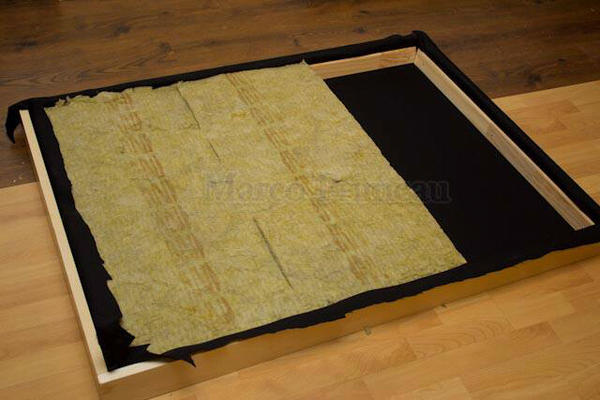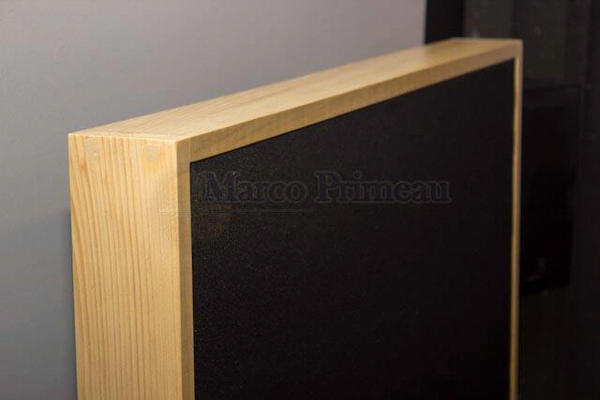Ok so I understand that many professional studios use big open wooden rooms to record drums in to get a more punchy sound. I happened to come across an article that said if you go out and buy plywood to put over the walls (and floor if there's carpet) that it will help achieve something close to that sound you can achieve in the professional studio.
I have several questions about using this method,
- Does this sound like a good idea to try to achieve a good sound?
- Does it have to be wood or can it be any type of hard reflective surface?
- If it needs to be wood, would there be a specific type of wood that would be best?
Thanks for any help you may be able to provide!
Tags
Comments
goalmaster14, post: 404988 wrote: Ok so I understand that many p
goalmaster14, post: 404988 wrote: Ok so I understand that many professional studios use big open wooden rooms to record drums in to get a more punchy sound. I happened across an article that said if you go out and buy plywood to put over the walls (and floor if there's carpet) that it will help achieve something close to that sound you can achieve in the professional studio.
What you "understand" is grossly inaccurate and flat out based on someone's ignorance that is not fact based, nor based upon any test data that makes sense.
I have several questions about using this method,
1. Does this sound like a good idea to try to achieve a good sound?
No
2. Does it have to be wood or can it be any type of hard reflective surface?
No
3. if it needs to be wood, would there be a specific type of wood that would be best?
See above 1 & 2
Thanks for any help you may be able to provide!
There are a couple of "things" you need to understand before you go any further...
1. Sound proofing is not the same as acoustic treatment
2. Sound proofing is achieved by isolation and mass.
3. Wherever air goes, so goes sound.
4. Mass is not cheap, but it can be economical.
5. Generally, isolation is not cheap
6. Understanding acoustics is, at times, counter intuitive and what makes sense to do, will actually cause more problems.
7. Acoustic treatment is best thought of a well thought out plan towards "fixing" problem frequencies in an enclosure, that yields a desired frequency response of said enclosure. This is done using absorption or reflection assemblies, or a combination of the two.
8. (And IMHO, the most important point...) No matter whether you're dealing with sound proofing and/or acoustic treatment, to do the job correctly, it will cost you about 3 times the amount of money you plan on spending... So, you need to establish a realistic budget, leaving room (no pun intended) to spend that overage. ***This is true whether you build a full on professional studio with a $2 million budget, or just adding acoustic treatment to a bedroom studio with a budget of $500.***
9. Foam is a "commonly used" acoustic treatment that comes in two types of products; Closed Cell and Open Cell... Closed Cell foam is useless. Open Cell foam is really only good for upper mids and high frequencies.
10. Parallel surfaces produce standing waves that are commonly referred to as "ringing", slap echo, and a myriad of other terms. You can either eliminate the parallel surfaces, or you can apply acoustic treatment to absorb those problem frequencies.
11. Small rooms/enclosures suffer from low frequency build up that can be dealt with by adding any number of bass absorption methods... IF it is desired to smooth out the low frequencies.
12. Tracking rooms are NOT the same as mixing rooms... A tracking room is generally allowed to have a sonic character/signature that one uses to their advantage. A mixing room is generally considered to be a room with as flat of a frequency response as possible, and has as neutral of a sonic character as possible.
There's TONS more information to understand if you really want to do the job right, so as not to spend good money after bad... which begins with arming yourself with as much CORRECT information as you can.
Start here: http://recording.org/forums/acoustics-construction.24/
PLEASE read: http://recording.org/threads/read-this-before-you-post.26684/ then formulate your situation and goals and post it to the studio construction and acoustics forum.
For a bit more insight into what all I'm yammerin' about, check out my build thread here: http://recording.org/threads/finally-the-saga-begins.14392/
If the room is to be used for vocal and other instruments you co
If the room is to be used for vocal and other instruments you could make removable pannels. This weekend I builded 2 Gobo, 4' X 3' X 3 1/2''. I made a frame with 3 1/2'' x 1'' x 8' pin wood, put fabric on a side, rockwool isolation inside and a hard back. I hang them on the walls and I also made some holders to make them stand on the floor so I can put them anywhere in the room and either put absorbtion or reflection sides facing the instrument. The project took around 100$ of materials and 2 mornings of work.
Of course I could have done it for less, but I needed the look to be accepted by my girlfriend (I took time to varnish the wood she helped pick the fabric and even helped building them)
Her first comment was : It's way better than the piramid foam you had smoke






it "wood" be helpful if you told us what the dimensions of your
it "wood" be helpful if you told us what the dimensions of your room is.